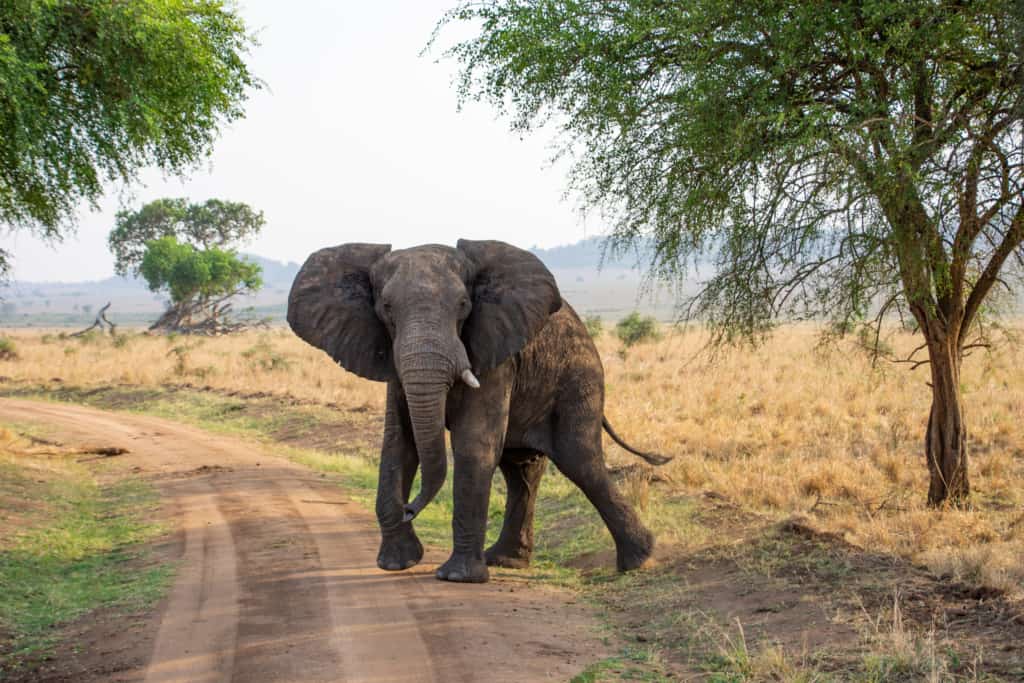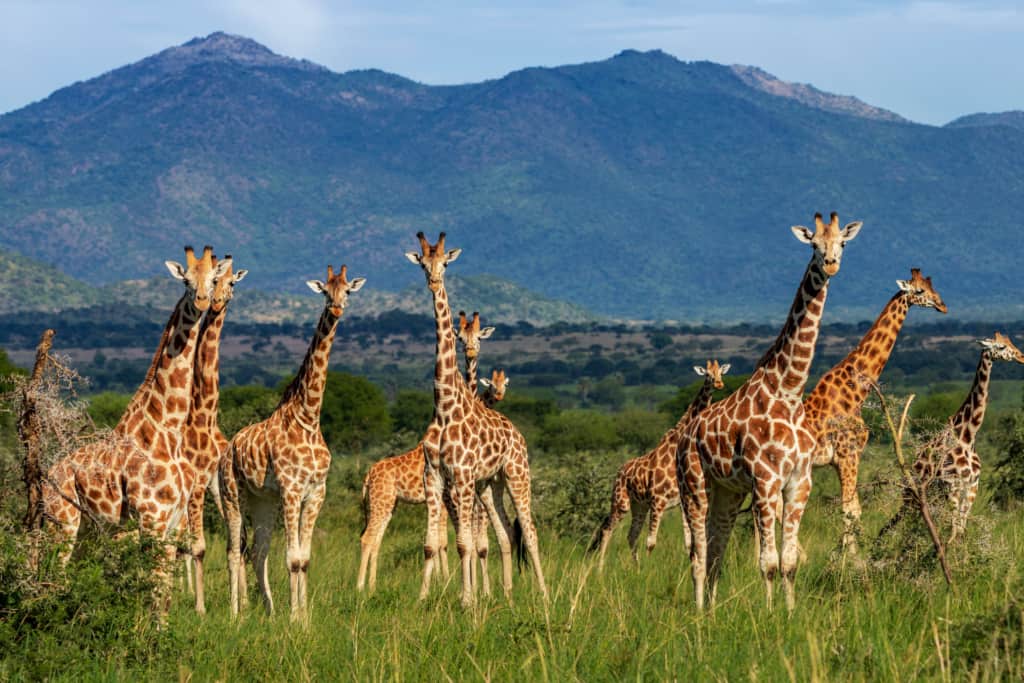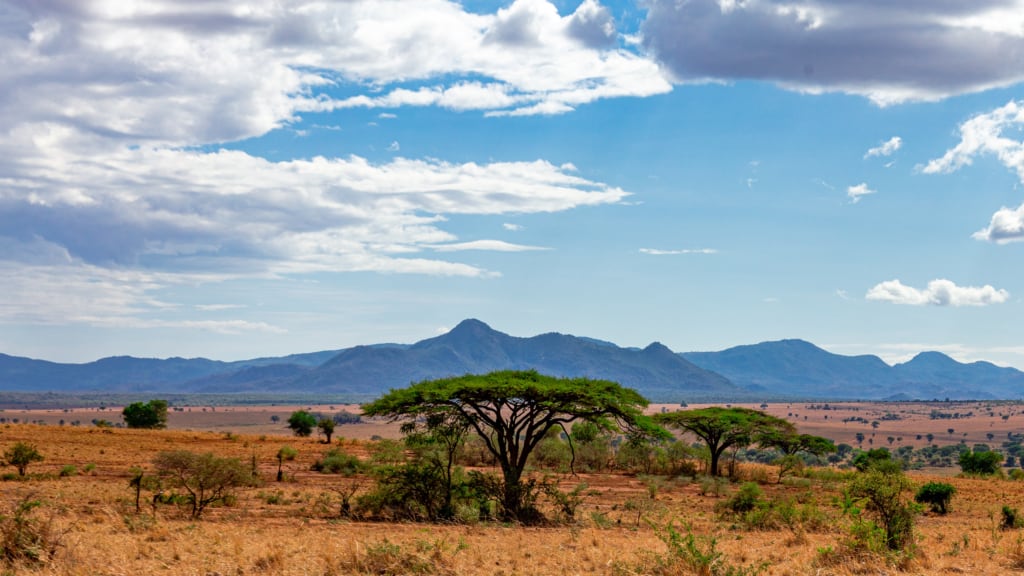Nestled in the wild frontier region of Uganda in east Africa, Kidepo Valley National Park is the most isolated national park in Uganda but still stands out to be one of the best places every visitor can ever go to on a Uganda safari.
The park harbors wildlife that can’t be found in any other Ugandan national park and is right at the core of a Savannah landscape right next to a number of mountainous ranges.
Besides the exceptional wildlife safari experience, the park is a great place for a cultural trail especially to those who would like to see the Karamojong, Acholis and other great tribes.
Table of Contents
Why visit Kidepo Valley National Park?
Kidepo Valley National Park safari
Kidepo National Park is a true gem with a huge abundance in wildlife and represents an authentic Uganda tourist experience yet remains unknown to so many, resulting in a lesser number of tourists for the savvy traveler.
The Karamoja region has in excess of 80 mammal species and visitors on tour into the Kidepo Valley National Park have a high chance of spotting these magnificent animals.
Much of the Kidepo Valley National Park is flat terrain with scenic undulating hills scattered in a few spots. The vegetation is eye-catching grassland and savannas that spread into the horizons as far as the eye can see, a beauty to behold for safari-goers.
CNN Travel has listed Kidepo as among the 3 most attractive national parks in the world and the charming landscape and wildlife viewing make it the only park in Uganda with conditions that rival Kenya’s Masai Mara or the Serengeti in Tanzania.

Animals
Travelers to Kidepo Valley NP can spot lions, cheetahs, leopards, mane less zebras, kudus, buffalos, Oryx, gazelle, elephants, giraffes, elands, roan antelopes and striped hyenas.
Also to be found in the area are jackals, hyenas, zebras, reedbucks, waterbucks, Uganda kobs, Nile crocodiles, duikers and many others.
The park has arguably the most diverse savannah fauna of any park in the country and is particularly rich in predators.
Kidepo usually offers excellent lion and elephant sightings. Cheetahs are also seen with increasing frequency, and it is home to many dry-country species, among them caracal, aardwolf, greater and lesser kudu, mountain reedbuck and Guenther’s dik-dik.
Herds of up to 1,000 buffalo are often encountered. Twelve antelope species occur in the park, including Jackson’s hartebeest, oribi, eland, Uganda kob and klipspringer.

Birds
Kidepo Valley has a very impressive bird list of more than 470 species, the second-highest population of any Ugandan reserve, following only Queen Elizabeth National Park. Sixty birds on its list haven’t been recorded in any other Ugandan park.
No comprehensive survey has been done, so visitors could easily see some species not previously recorded for the park. Kidepo is especially good for spotting raptors, with 56 species on record.
Migratory birds are present from November to April and visitors can look out for Dark chanting goshawks and Kori bustards.
Trees
The vegetation of the park is diverse with grey-haired acacia (Acacia gerrardii), savannah woodland that emerges in the south and into a fire climax grassland, tree and shrub steppe which slowly transcends into bush lands with forests on the Mountain slopes.
The borassus palms are common along the major rivers of Kidepo, Lopirpir and Kulao. Much of the park is composed of open savannah grassland, dominated by a mixture of acacia and other perennial grasses, such as Themeda, Chloris, Panicum and Seteria species.
Dry thickets composed of numerous short trees and shrubs are also common. This vegetation is usually dry for more than a half of the year and antelopes such as Guenther’s dik-dik (Madoqua guentheri), which is found nowhere else in Uganda.
Other activities at Kidepo Valley National Park
The following are some other Ugandan activities that visitors to Kidepo Valley National Park can look forward to on their trip:
- Viewing points: Binocular viewpoints have been installed at Apoka Rest Camp, Nagusokopire Campsite and Kakine Campsite. The latter enjoys a superb 3600 panorama that includes the Napore-Nyungea range, the Morungule Mountains and Mount Lomej in South Sudan.
- Kidepo Valley Drive: The 30km drive from Apoka offers a stunning scenic trip where visitors can pause on the Narus-Kidepo watershed at Lokimorigen to enjoy a spectacular view towards the looming, 2975m-high Jebel Lotuke in South Sudan.
- Nature Walks: Short nature walks around Apoka Rest Camp provide the chance to view species such as zebras, hartebeest and reedbucks. Longer walks through the open grasslands of East Kakine should provide sightings of giraffe, buffalo, elephant and lions.
- Bird Watching: Experienced ranger guides are available at Apoka to help locate and identify birdlife in the park’s various habitats.
- Mountain Hiking: The Morungule range, which rises from the plains to the north east of Apoka, can be explored on foot with a ranger guide escort.

How to get to Kidepo Valley National Park?
By Plane
Entebbe International Airport (EBB), some 46km/29mi from Kampala, Uganda’s capital is how most most visitors enter Uganda and travellers should be aware of the latest Uganda visa requirements.
Fly Uganda and Aerolink run scheduled domestic flights, which take about 2 hours from Entebbe to Kidepo Valley.
By Road
It is also possible to drive to Kidepo. There are several routes. The most direct route, through Gulu to Lokumoit Gate, takes about 10 hours. The trip can be broken up with an overnight stop at Ziwa Rhino Sanctuary, Chobe Safari Lodge, Gulu or Kitgum.
Two longer routes pass through the remote Karamoja subregion, arriving at Nataba Gate. Karamoja was subject to banditry in the past, but it has been considered safe for several years and is a growing center of community-based tourism focused on the small town of Moroto.
Carrying a small amount of local Ugandan currency, the Ugandan Shilling (UGX) is advised for smaller purchases.
Tariffs & Regulations
Entrance fee
All Kidepo Valley National Park fees are payable at the gate at time of entrance. Park fees are valid for 24 hours.
- Adults pay entry fees of USD $40 per person
- Foreign residents pay USD $30 per person
- Foreign non-resident children pay USD $20
- Foreign resident children pay USD $10
Regulations
If you keep to park rules, you can stay with the animals as long as they are not disturbed by your presence.
Accommodation at Kidepo Valley National Park
Tourists at Kidepo Valley National Park can choose from a number of different options when deciding where to sleep. Accommodation in the form of safari lodges ranging from luxury to low budget can be found.
Lodges
The outstanding lodging and accommodation options of Apoka safari lodge, Kidepo Savannah Lodge, Nga’Moru Wilderness camp coupled with the cool environment and exceptional views of the Savannah grasslands attracts visitors from far and wide.
Apoka Safari lodge is the only high-end lodge/accommodation facility found inside Kidepo valley national park, strategically located overlooking the Narus River valley within the distant Kidepo wilderness.
Apoka lodge has about 10 spacious bedrooms having canvas walls incorporated with a rocky kapje with everlasting views of the savannah landscape on your private veranda.
Alternative lodge options include Kidepo Savannah lodge, a mid-range facility offering incredible views of the endless Narus valley and the distant views of Mount Morungole ranges.
The lodge provides self-contained and non-self-contained lazy camping tents; whichever you choose from, you will have a great value for money. The self-contained tents have comfortable beds clad in Masai blankets and hot showers in attached open air bathrooms.
Some tents also have a terrace or balcony where you can relax incorporated with the views of the park and the mountains.
Camping
There are two scenically located campsites in the park at Kakine and Nagusokopire. A shelter, flushing toilets, water and firewood are provided as well as a ranger guide to entertain guests with cultural stories and other local information.
Hostel
The park runs a hostel with 21 twin-bed bandas, fourteen of which are self-contained. A 4-bedroom guesthouse for self-catering visitors is also available.
Campervan
Guests on a self-drive safari with a campervan can make significant savings by sleeping in their vehicle.
Bars/restaurants/amenities
Lodges will typically have all meals and drinks included in the lodge package.
Useful information
Geography
On a Uganda safari tour, Kidepo Valley can be found in the remote northeast corner of the country and has a true wilderness feel and is a great destination for the adventurous traveler. Trips to Kidepo Valley NP are often combined with safaris to Murchison Falls National Park.
Trips to the park are often combined with tours of Bwindi Impenetrable National Park and Murchison Falls National Park.
Weather
The climate in Kidepo Valley National Park is semi-arid. Droughts are common. Temperatures can reach as high as 40°C/104°F, but average around 29°C/84°F in the afternoon and 17°C/63°F at night.
There is one Wet season (differing from two Wet seasons in most of the country) from April to August.
Best time to go
Understanding the best time to visit Uganda is important as this will impact accommodation, flight prices, availability and the weather that visitors can expect on their safari tour.
The prime time to see wildlife in Kidepo Valley National Park is during the Dry season (September to March). Kidepo is, however, located in a semi-arid region and can be visited throughout the year.
The Wet season months (April to August) are pleasantly less hot and bring beautiful scenery. Bird watching is at its best at this time as well.
Health
It is recommended to visit a travel clinic before coming to Uganda. Several Uganda vaccinations are recommended and usually administered before your departure.
It is important to guard against malaria. You can limit any risk greatly by using mosquito repellent (those containing DEET are most effective), covering up in the evening and by taking antimalarial medication.
Also consult your healthcare practitioner about recommended vaccinations before your trip. Several Uganda vaccinations are recommended and usually administered before your departure.
FAQs
Where is Kidepo Valley National Park located?
Kidepo Valley is in the remote northeast corner of the country and can be accessed using a chartered flight via the main entrance to Uganda at Entebbe International Airport (EBB).
What animals will visitors see at Kidepo Valley National Park?
Visitors to Kidepo Valley National Park will see lions, cheetahs, leopard, mane less zebras, kudus, buffalos, Oryx, gazelle, elephants, giraffes, elands, roan antelopes, striped hyenas, jackals, zebras, reedbucks, waterbucks, Uganda kobs, Nile crocodiles and duikers.
How much is the entrance fee to Kidepo Valley National Park?
The entrance fee for Kidepo Valley National Park is USD $30 for non-resident adults and $20 for non-resident children.